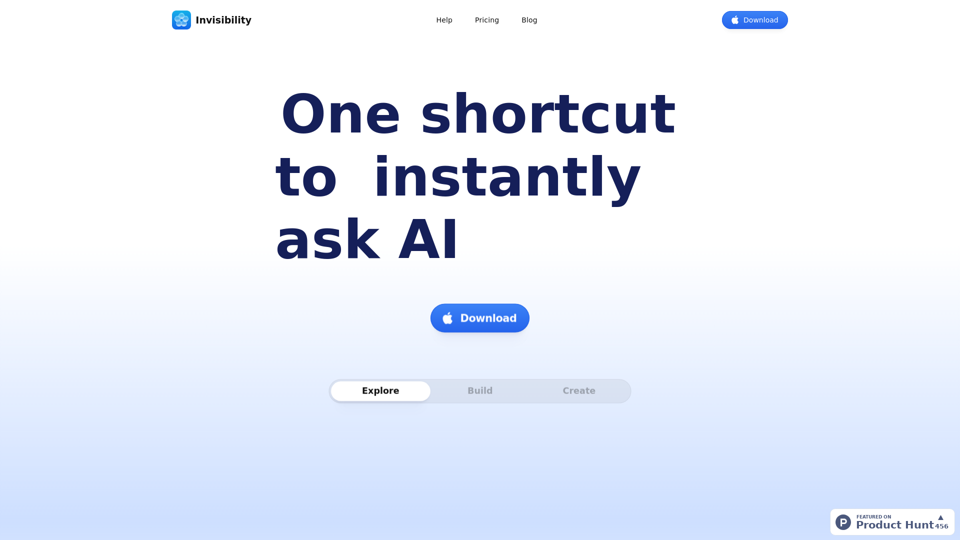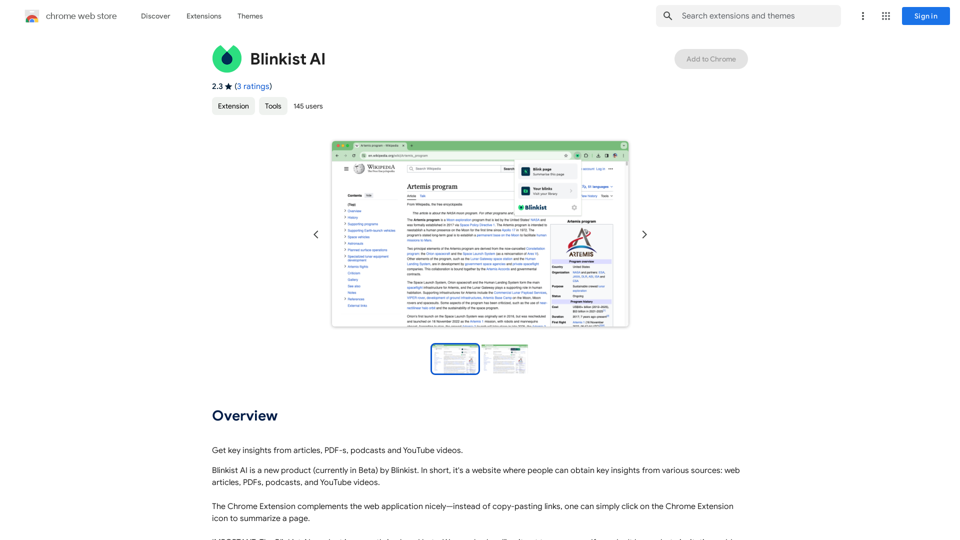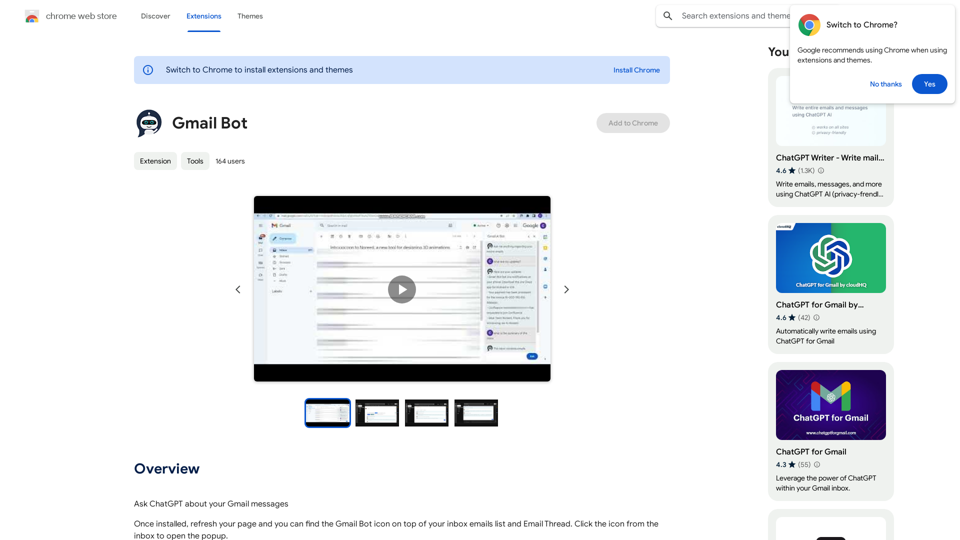Paraphraser.io is an advanced AI-powered online tool for rewriting and rephrasing text while preserving the original meaning. It employs cutting-edge natural language processing technology to deliver high-quality paraphrasing results for various text lengths, from sentences to entire articles. The tool offers multiple paraphrasing modes, multilingual support, and both free and premium options to cater to diverse user needs.
Paraphrasing Tool - Free AI Paraphraser
Paraphraser is a complimentary rephrasing tool that utilizes AI algorithms to assist you in rewording text, sentences, and paragraphs, enabling you to convey ideas using your own language.
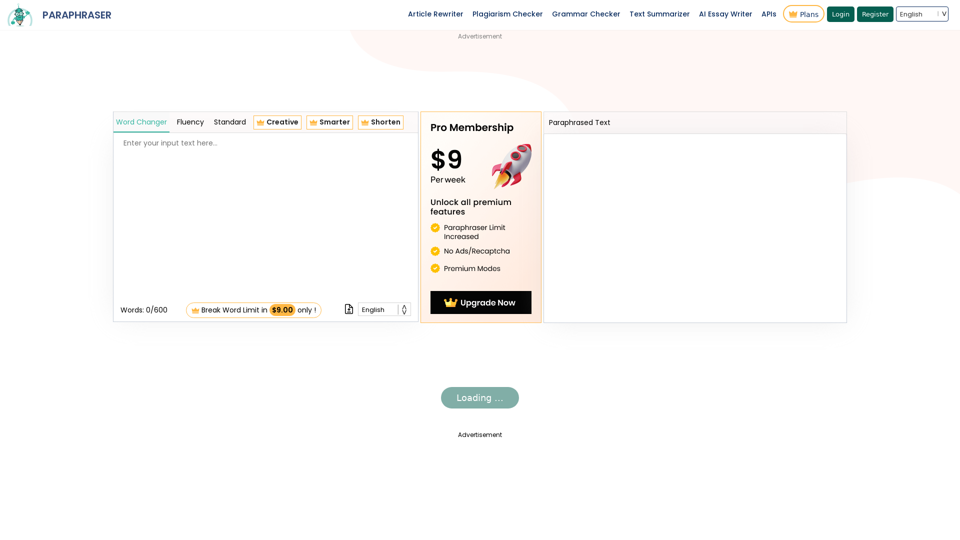
Introduction
Feature
AI-driven Paraphrasing
Utilizes state-of-the-art AI algorithms for human-like rephrasing, ensuring high-quality output.
Multiple Paraphrasing Modes
Offers various modes including Word Changer, Fluency, Standard, Creative, Smarter, and Shorten, catering to different paraphrasing needs.
Multilingual Support
Available in over 20 languages, making it accessible to a global user base.
Plagiarism-free Output
Generates unique content to avoid duplication, helping users maintain originality in their work.
User-friendly Interface
Easy to use across all devices, ensuring a smooth user experience.
Fast Processing
Quickly rephrases large amounts of text, saving users valuable time.
Free and Premium Options
Offers both free and paid plans to accommodate different user requirements and budgets.
API Integration
Provides paraphrasing APIs for educational institutions, expanding its utility beyond individual use.
FAQ
Is using a paraphrasing tool illegal?
No, using a paraphrasing tool is not illegal if used correctly. However, in academic writing, paraphrased content should be properly cited.
Can you get in trouble for using a paraphrasing tool?
If used responsibly and ethically, you should not get in trouble. Always cite sources and use the tool as an aid, not a substitute for original thinking.
Does using a paraphrasing tool count as plagiarism?
No, using a paraphrasing tool does not inherently count as plagiarism. The tool helps create unique content, but proper citation is still necessary when using others' ideas.
Can I use a paraphrasing tool for legal writing?
Yes, but use it responsibly. Always check for plagiarism and cite sources, even when using a paraphrasing tool in legal writing.
Latest Traffic Insights
Monthly Visits
1.18 M
Bounce Rate
47.17%
Pages Per Visit
3.54
Time on Site(s)
149.30
Global Rank
42514
Country Rank
Indonesia 2484
Recent Visits
Traffic Sources
- Social Media:0.69%
- Paid Referrals:0.20%
- Email:0.05%
- Referrals:3.06%
- Search Engines:71.04%
- Direct:24.94%
Related Websites
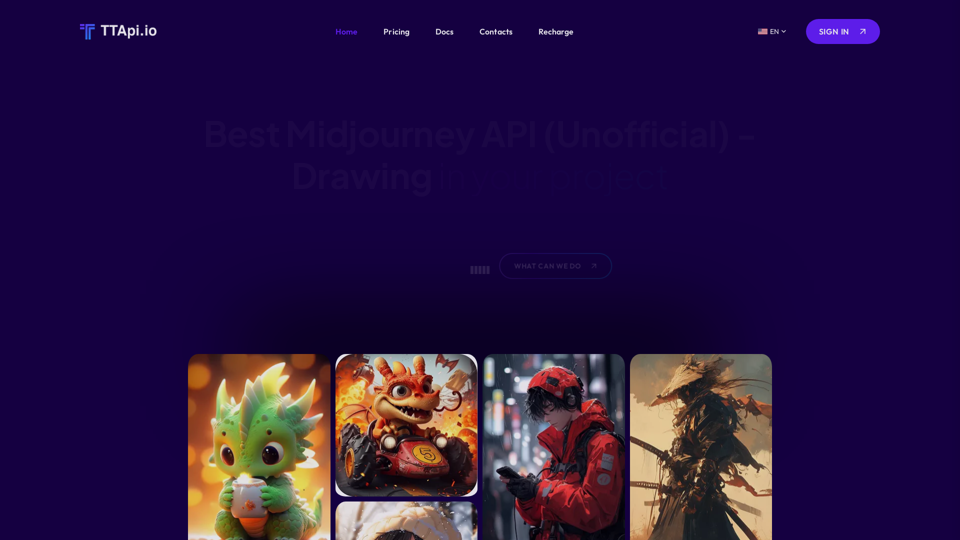
Affordable Midjourney API Integration - Best Deals & Packages | ttapi.io
Affordable Midjourney API Integration - Best Deals & Packages | ttapi.ioDiscover affordable Midjourney API integration, best buy packages, and cheap plans. Get reliable Midjourney API services and solutions at ttapi.io today!
9.78 K
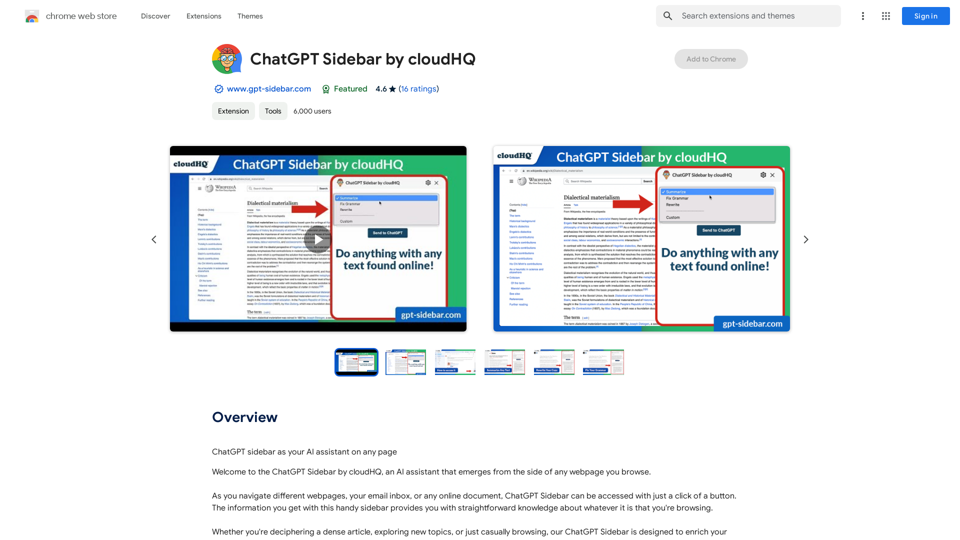
ChatGPT Sidebar by cloudHQ This is a powerful tool that brings the capabilities of ChatGPT directly into your workflow. Key Features: * Seamless Integration: Effortlessly access ChatGPT within your favorite applications like Gmail, Slack, and Notion. * Contextual Understanding: ChatGPT remembers past interactions, providing relevant and coherent responses within the context of your current task. * Boost Productivity: Automate repetitive tasks, generate creative content, and get instant answers to your questions, all without leaving your workspace. * Enhanced Collaboration: Share ChatGPT-powered insights and ideas with your team, fostering more productive and efficient collaboration. Benefits: * Save Time and Effort: Streamline your workflow and focus on high-value tasks. * Unlock Creativity: Overcome writer's block and generate innovative ideas. * Improve Communication: Craft clear, concise, and engaging messages. * Make Informed Decisions: Access reliable information and insights to support your decision-making process. Get Started Today: Visit our website to learn more and start using ChatGPT Sidebar by cloudHQ.
ChatGPT Sidebar by cloudHQ This is a powerful tool that brings the capabilities of ChatGPT directly into your workflow. Key Features: * Seamless Integration: Effortlessly access ChatGPT within your favorite applications like Gmail, Slack, and Notion. * Contextual Understanding: ChatGPT remembers past interactions, providing relevant and coherent responses within the context of your current task. * Boost Productivity: Automate repetitive tasks, generate creative content, and get instant answers to your questions, all without leaving your workspace. * Enhanced Collaboration: Share ChatGPT-powered insights and ideas with your team, fostering more productive and efficient collaboration. Benefits: * Save Time and Effort: Streamline your workflow and focus on high-value tasks. * Unlock Creativity: Overcome writer's block and generate innovative ideas. * Improve Communication: Craft clear, concise, and engaging messages. * Make Informed Decisions: Access reliable information and insights to support your decision-making process. Get Started Today: Visit our website to learn more and start using ChatGPT Sidebar by cloudHQ.ChatGPT sidebar as your AI assistant on any page
193.90 M
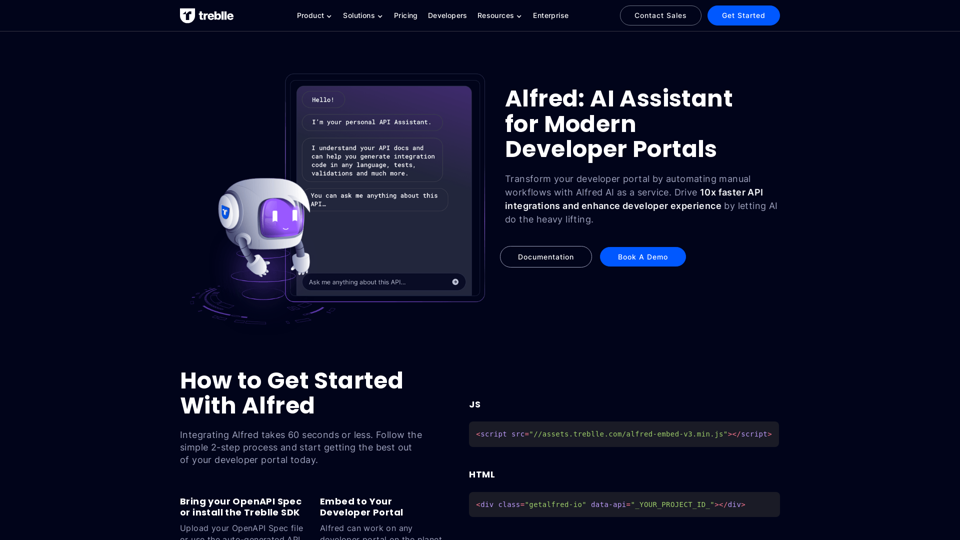
Transform your developer portal by automating manual workflows with Alfred AI as a service. Drive 10x faster API integrations and enhance developer experience by letting AI do the heavy lifting.
67.31 K
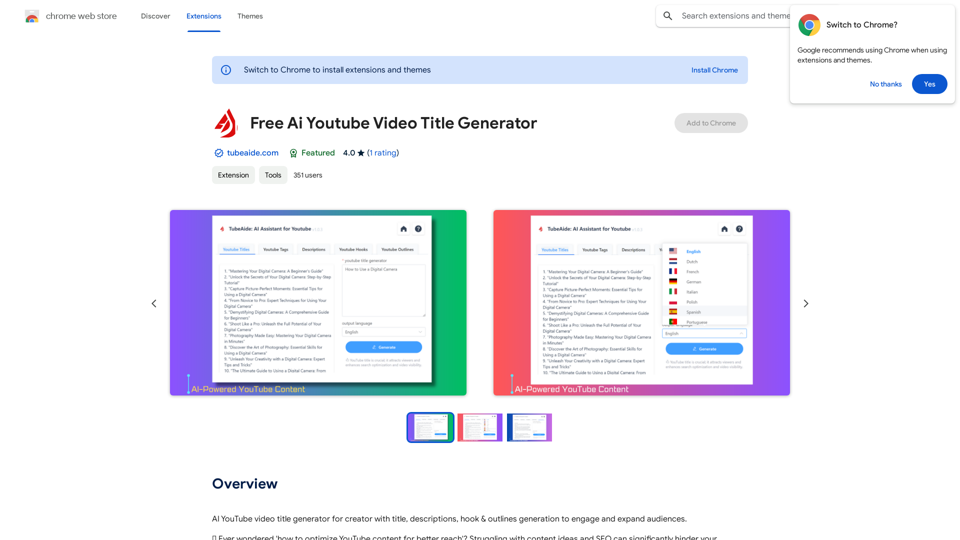
AI YouTube Video Title Generator for Creators: Generate Titles, Descriptions, Hooks, and Outlines to Engage and Expand Your Audience.
193.90 M
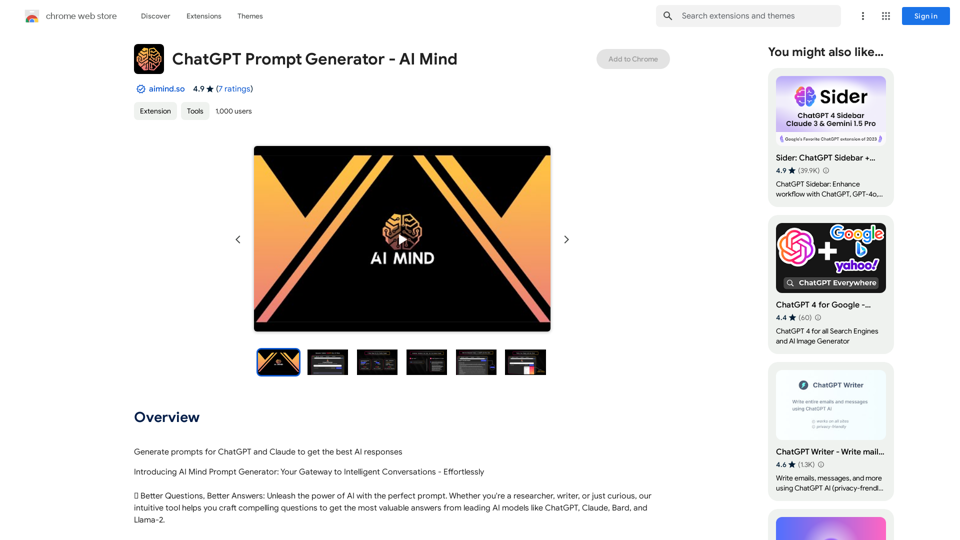
ChatGPT Prompt Generator - AI Mind This is a tool to help you generate creative and effective prompts for ChatGPT. Features: * Diverse Prompt Types: Explore various prompt categories like story writing, dialogue, code generation, and more. * Customization Options: Tailor your prompts with specific details, tone, style, and length preferences. * Inspiration & Examples: Discover a library of pre-made prompts and examples to spark your imagination. * AI-Powered Suggestions: Get intelligent suggestions and refinements for your prompts based on your input. How it Works: 1. Choose a Prompt Type: Select the type of output you desire from ChatGPT. 2. Provide Input: Enter your desired keywords, themes, or specific instructions. 3. Customize Settings: Adjust parameters like tone, style, length, and format. 4. Generate Prompt: Click "Generate" to receive a unique and optimized prompt tailored to your needs. Start Creating! Let your imagination run wild and explore the possibilities of ChatGPT with our AI-powered prompt generator.
ChatGPT Prompt Generator - AI Mind This is a tool to help you generate creative and effective prompts for ChatGPT. Features: * Diverse Prompt Types: Explore various prompt categories like story writing, dialogue, code generation, and more. * Customization Options: Tailor your prompts with specific details, tone, style, and length preferences. * Inspiration & Examples: Discover a library of pre-made prompts and examples to spark your imagination. * AI-Powered Suggestions: Get intelligent suggestions and refinements for your prompts based on your input. How it Works: 1. Choose a Prompt Type: Select the type of output you desire from ChatGPT. 2. Provide Input: Enter your desired keywords, themes, or specific instructions. 3. Customize Settings: Adjust parameters like tone, style, length, and format. 4. Generate Prompt: Click "Generate" to receive a unique and optimized prompt tailored to your needs. Start Creating! Let your imagination run wild and explore the possibilities of ChatGPT with our AI-powered prompt generator.Generate prompts for ChatGPT and Claude to get the best AI responses
193.90 M
